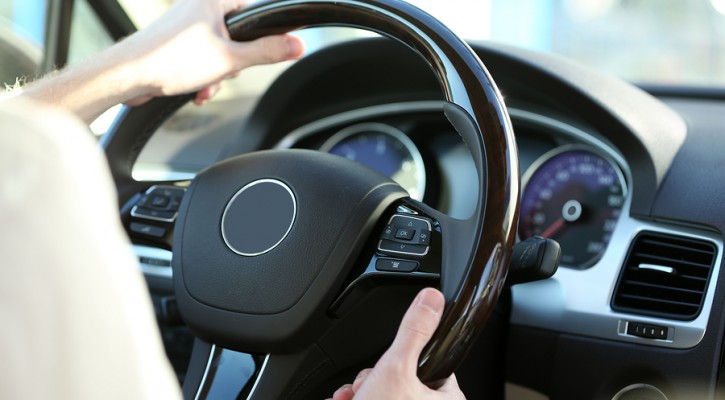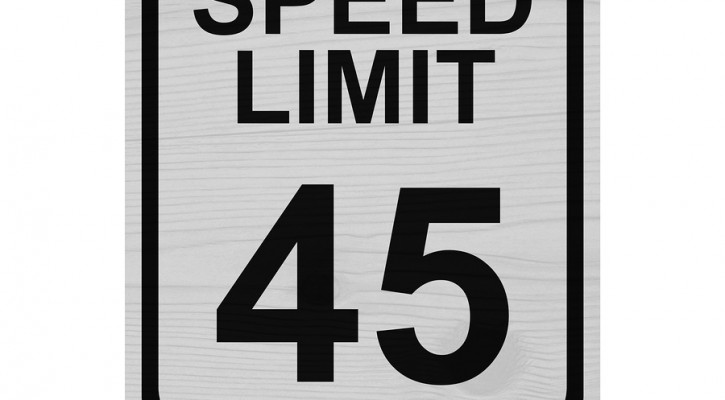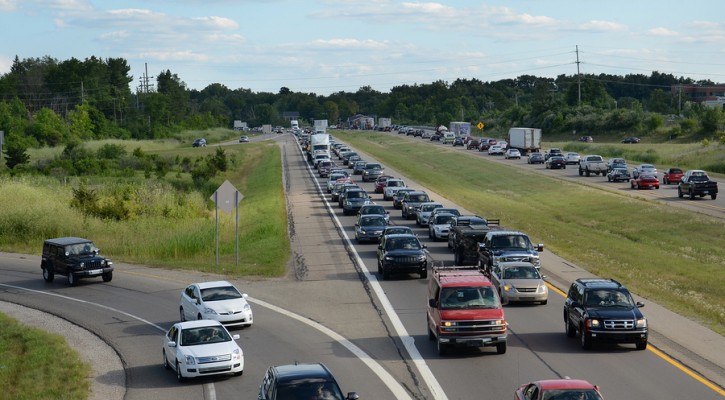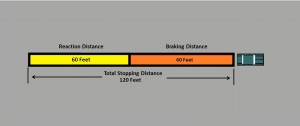Category Archive: Ask the Driving School Instructor

Ask The Driving School Instructor: What’s The Best Way To Take A Driving Test?
February 13, 2015
Question: What is the best way to take the written driving test?
Answer: A lot of people have what educators refer to as “test anxiety.” They get so nervous about a test that, even though they may know the material, their anxiety about the test can make even an easy test hard. It doesn’t have to be that way. Here are a few tips to help you be prepared for the test.
Before we go on, we first have to have to understand how the test works and learn a couple of terms. Most state tests are given by computer. The questions come from a large database of up to 1,000 questions and the computer will randomly pick the required number of questions from that database. Because the original database of questions is so large, if you should fail the test and have to take it again, you probably won’t see many of the same questions on your second test.
Each question will consist of the question, only one correct answer, and two or three wrong answers known as “distractors.“
Depending on the state, you may or may not have a time limit in which to take the test. In the case of Florida’s test, you have one hour to answer 50 questions. That means you have two full minutes for each question. That really is a long time and you won’t spend a full two minutes on each question so that gives you more time to answer the harder ones.
So here’s the best way to take the test.
1. Know the material! No matter how smart you may be, if you haven’t studied the material, you stand a good chance of failing the test. For the driving test, the best source of study is the state driver’s handbook. You can get a printed copy from the DMV or download a free copy online from your state’s DMV website. For Floridians, you can download a free copy here: Florida Driver Handbook. You can also take practice tests online that will help you prepare for the test.
2. Read the question carefully! A lot of questions are missed because the test taker didn’t read the question correctly. Take your time and read it carefully so you know exactly what kind of answer the question is looking for.
3. Read all of the answers/distractors carefully. One single word can turn an answer from a correct answer into a distractor.
4. Eliminate the wrong answers. If you aren’t completely sure of the correct answer, you can help yourself by eliminating the wrong answers first. Then you can more easily choose the correct answer.
5. “All of the above” or “none of the above” isn’t always the correct answer; don’t automatically choose those answers without reading all of the other answers first.
6. If there is more than one answer that you absolutely know is true, then “all of the above” is probably the correct answer.
7. If there is one answer that you know for sure is correct, then “none of the above” won’t be the correct answer.
8. If you aren’t sure of the correct answer and you have two answers that appear to be correct, read each one carefully and look for that possible single word that could turn it into a wrong answer. If, after eliminating the ones you know are wrong, you still aren’t sure, then go with your best guess.
9. Your first choice is probably the best choice. Don’t try to second guess yourself and go back and change an answer. The only time you should go back and try to change an answer is if a later question makes you realize that you were wrong on the previous question. Still, don’t change it unless you are absolutely positive that you were wrong the first time. If you aren’t sure, leave it alone. Remember that you’re using up time to go back and change an answer.
Good luck!

Ask The Driving School Instructor: Braking Distance VS Stopping Distance
December 3, 2014
Question: I’m studying for my driving exam and I’m confused about the difference between stopping distance and braking distance.
Answer: It can be a little confusing, I’ll try to sort it out for you.
If you encounter an emergency on the road requiring you to stop suddenly, there are two parts that make up the total stopping distance.
- Reaction distance
- Braking distance
When you’re in an emergency situation, it takes time to react to the emergency, to brake, and to finally bring your vehicle to a complete stop. Remember that your vehicle is traveling a surprisingly long distance every second. At 40 mph, your vehicle will travel approximately 60 feet per second and a lot can happen in that short amount of time.
Reaction time
The time it takes you to react and respond to an emergency can be broken down into three parts:
- Perception or awareness time
- Decision time
- Action time
Let’s look at each part by imagining a scenario that requires you to make a sudden stop. Let’s say that you are traveling at 40 mph when the driver of the car ahead of you suddenly applies his brakes.
Perception time
The perception or awareness time is how long it takes before you are even aware that the driver ahead is suddenly stopping. If you aren’t expecting an emergency, it will take time before you realize that the car ahead is suddenly braking
Decision time
Now that you’re aware of the emergency ahead, you have to decide what to do. Will you hit the brakes or swerve into another lane to go around? If you try to change lanes, is the lane clear or are there other vehicles that may be in the way? It takes time to decide what to do. In our emergency, let’s say that you decide to hit the brakes but that decision took time
Action time
Now that you’ve decided you’re going to brake, you have to move your foot from the gas pedal to the brake pedal and push it all the way down. That also ate up precious time.
For the average person, the total reaction time can take from three-quarters to a full second. At 40 mph, if your reaction time is one full second, you’ll have traveled almost 60 feet before applying the brakes.
Braking Distance
Now that you’ve applied the brakes, it still takes time to come to a complete stop. For an average car that weighs almost 3,000 pounds, that can take up to 60 feet.
Total stopping distance
So, the total stopping distance is made up of both the reaction distance plus the braking distance. Adding the two together means that, at 40 mph, it can take up to 120 feet before your vehicle will come to a complete stop. That’s why maintaining a safe following distance between you and the vehicle ahead is so important.
To test your reaction time, visit: How fast is your reaction time?

Ask The Driving School Instructor: Hand Over Hand Steering
November 16, 2014
Question: Do I need to use the hand over hand technique while making a left or right turn, some people say yes some no. Can I just keep both hands on steering wheel, I have a test coming up this week.
Answer: There’s nothing in the Florida driver’s handbook about using the hand over hand steering method. The manual only says that you should keep both hands on the wheel and maintain control of the vehicle while steering. As a former license examiner for Florida’s Division of Drivers Licenses, I can tell you that I didn’t make drivers use that method during the test; I only checked to see if both hands were on the wheel, that they were in control, and could steer the car in the right direction.
During the test, you should keep both hands at the 8 and 4 o’clock position on the wheel. When making left or right turns, the best method to use is the “push and pull” method. That means, if you’re making a right turn, pull the wheel with your right hand and push with your left. When straightening out, just relax your grip and let the wheel slide naturally back to the neutral position.
The proper placement of your hands and the push and pull method are best explained in the video below.
Good luck on your test.

Ask The Driving School Instructor: Slow Driver
November 5, 2014
Question: I’m still getting used to driving and I tend to be a slow driver compared to the rest of the traffic, is that dangerous?
Answer: In a word, yes but it depends on how fast the rest of the traffic is going.
Young drivers are often taught that they should go with the flow of traffic and that’s generally good advice unless the majority of the traffic is driving faster than the speed limit. If everyone else is speeding, that doesn’t mean you also have permission to speed. Speeding takes away the time you need to react to a dangerous situation ahead and it increases the crash forces. Just because “everyone else is doing it” doesn’t mean you should do it too. And remember, even if everyone else is doing it, generally, a police officer can only stop one car at a time for a speeding ticket and you could easily be the one that he chooses to stop.
If the flow of traffic is moving at the speed limit and you’re driving slower than everyone else, it could be dangerous for several reasons;
- When driving slowly, other drivers who may not be paying full attention to the road ahead may expect you to be traveling at the normal speed and misjudge their following distance.
- Drivers stuck behind you can become frustrated leading them to take risky actions like tailgating or trying to pass you without enough clear space.
- Driver frustration can, in extreme cases, lead to road rage situations where another driver will try to harm you in some way as punishment for holding him/her back.
You should never speed but you should always try to drive at the speed limit if possible. Never drive in the left lane unless you’re passing a slower vehicle or preparing to turn left. Keep the left lane open for others to pass you.
If you’re driving on a country road with no passing lanes and traffic is building up behind you, pull off the road long enough for the faster traffic to pass. It’s the polite thing to do and it’ll keep you safer in the long run.

Ask The Driving School Instructor: Interstate Driving
October 20, 2014
Question: When should a permit driver drive on the interstate for the first time?
Answer: This is a hard one to answer. Driving on the interstate should be a required part of every new driver’s training but when to attempt it will be different for each driver.
The first thing to know is that, scary as they may seem, driving on interstates or limited access highways, is actually safer than driving on a country road. More fatal crashes occur on country roads than on interstates. However, interstates do require special skills.
Interstates require that a driver drive at high speeds. Driving too slowly on the interstate can be dangerous. Interstates also require that a driver know how to merge smoothly into traffic and the new driver may be dealing with a lot more traffic than he or she is used to.
As far as when to get on the interstate for the first time, the new driver should have a lot of driving experience including driving at higher speeds. After getting experience in driving in heavier traffic, the new driver should first practice on multi-lane highways with speeds above 50 mph.
Instead of jumping into city interstate traffic, it’s best to expose the new driver to the interstate in a rural area where traffic may not be so heavy. After getting experience there, the driver can be slowly exposed city traffic.
When entering the interstate, it’s important to remember that you need to get up to interstate speeds on the entrance ramp. As you near the end of the ramp, watch for an opening in traffic and then adjust your speed to merge into that opening. Never stop on an entrance ramp unless traffic just won’t give you enough clear space to merge. After merging into traffic, keep at least a two second following distance between you and the vehicle ahead.
Once you’re on the interstate, you should practice merging and changing lanes. Remember to stay out of the far left lane unless you’re passing slower traffic. Once you’ve passed, move back into the center or right lane.
Pay attention to speed limit signs. Speeds on rural interstates may be as high as 70 mph but can go down as low as 55 mph when nearing a city. Driving with the flow of traffic doesn’t mean you should go over the speed limit. Driving too fast limits the reaction time you need to make decisions to avoid a crash.
If you miss your exit, never try to stop and back up. Go to the next exit and reenter the interstate in the other direction to get back to your exit. When exiting the interstate, get into the correct lane at least one-half a mile before the exit. Don’t slow to exit until you enter the exit ramp.

